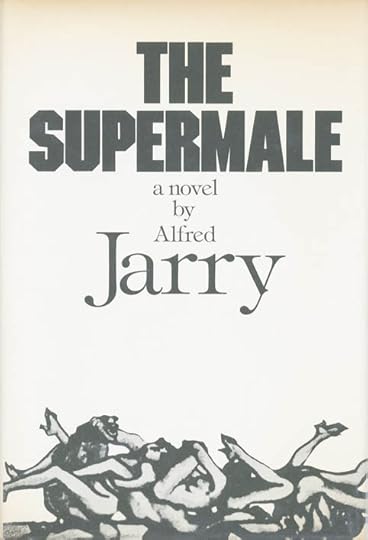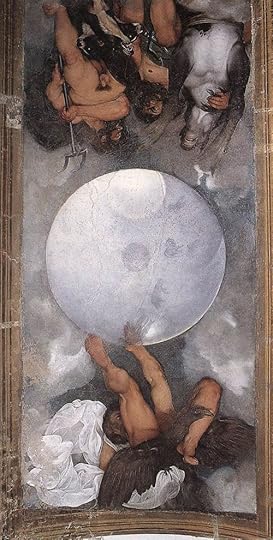Patrick Kelly's Blog: PATRICK KELLY—AUTHOR BLOG
July 18, 2014
To Be Continued...
Hello, all!
Sorry for the dead space this week. I'll be taking a pause on the blog for an indefinite period, to focus on other projects.
You can keep in touch with me via Twitter, Goodreads, or by e-mailing me through this contact form.
Be sure to subscribe at the bottom of this window. You'll be among the first notified once the blog is live again (I promise, you won't get spam and I won't share your info).
Speak soon,
P
July 11, 2014
Image of the Week 029
In this painting, the eagle represents the philosophic Mercury. The male part of the androgyne corresponds to the bodily dimension, the female to the person's psyche. The androgyne is an allegory of the philosopher's stone obtained through a harmonious synthesis of the elements (corporeal, psychic, and spiritual) that form all substances, the two cosmic principles (male and female), and the two states (fixed and volatile).

The Androgyne, a miniature from the Aurora consurgens, mid-15th century.
The male part holds a hare, famous for its speed. The female holds a bat, a flying mammal who symbolizes the fixation of the volatile state. Even the eagles on the ground allude to fixation, or the "fall" of the volatile parts of matter.
July 10, 2014
Myth of the Week 029

Yacuruna are anthropomorphic creatures who live in grandiose, underwater cities. Belief in the yacuruna is most common among the indigenous people of the Amazon. The term is derived from the Quechua language: yacu ("water") and runa ("man").
The yacuruna have variously been described as hairy, with their heads turned backwards and deformed feet; alternately, they may appear more human-like, distinguishable by the serpent they carry as a necklace and the crocodile they may ride as a canoe. They are nocturnal beasts, emerging by dark of night to roam the rainforest, searching for prey. They can communicate with other water-dwelling creatures, and it's even possible for them to exert control over other animals.
Locals believe that a yacuruna can transform itself into a river dolphin, seek out a young woman woman for its victim, and disguise himself as a handsome young man, one who uses aphrodisiacs to seduce his captor into his joining him in the depths of the river.
Though generally depicted as sexually alluring, malevolent creatures, the yacuruna are sometimes able to heal others. When summoned by a shaman, the creature can be forced to pass its abilities over to a sick person.
Note of the Week 029
Congratulations to Tonya Coleman, who's won an autographed copy of Taking Jezebel.
July 8, 2014
Novel of the Week 029

Alfred Jarry's The Supermale is equal parts surrealism, sci-fi, and philosophy. Published in 1902, it was Jarry's last novel. The irreverent and darkly comic story involves a race between a train and a team of cyclists fueled by a special "perpetual-motion food."
The French writer coined the term "pataphysics" to describe his subject matter, saying, "[Pataphysics deals with] the laws which govern exceptions and will explain the universe supplementary to this one." In pataphysics, every event in the universe is accepted as an extraordinary event.
Demon of the Week 029
The Aerico is a demon from Greek mythology who lurks in treetops. It particularly likes to inhabit old cherry trees and will attack anyone who attempts to climb its dwelling. If someone walks into the shadow an Aerico’s tree, their hands and feet will swell.
Alternatively, the demon is described as a harbinger of disease. In these instances, the Aerico is believed to drift invisibly through the air, though it may occasionally take the form of a human. As a disease demon, the Aerico is believed to have spread malaria and the plague.
July 4, 2014
Image of the Week 028
Here, Jupiter touches the world's glove with an open hand, the tool of his creative power. The other gods are based on the theme of the cosmic tripartition (sky, earth, underground world) developed by the Neoplatonic doctrine of Proclus. Jupiter is air, Pluto is earth, and Neptune is water.

Caravaggio, Pluto, Neptune, and Jupiter (Allegory of Alchemical Creation), ca. 1597.
Myth of the Week 028

Portrait of the Bai Ze on an Okinawan scroll as painted by Gusukuma Seihō, official court painter at the royal court of the Ryūkyū Kingdom, 1614-1644.
Baí Zé (simplified Chinese: 白泽; traditional Chinese: 白澤; Wade–Giles: Pai Tse), or hakutaku (白澤) in Japanese, is a fantastic beast from Chinese legend. Its name translates literally to "white marsh".
The Baí Zé was first encountered by the emperor Huáng Dì. Supposedly, the beast dictated a guide to Huáng Dì, telling the forms and habits of all 11,520 supernatural creatures in the world, plus how to overcome their hauntings and attacks. The information was transcribed in a book called the Bái Zé Tú (白泽图/白澤圖). Although the book no longer exists in its intact form, many fragments of it have survived through other texts.
A similar creature, the kutabe, is described in Japan as a "bovine or monstrous felid creature with nine eyes and six horns, arranged in sets of three and two on both its flanks and its man-like face." It is also depicted with the body of a lion, eight eyes, and a horn or multiple horns on its head.
Note of the Week 028
Infamous: First Light and the need for more female characters, via IGN. Couldn't agree more: the games characters we are given that are strong, powerful women are also oftentimes more defined by their busty, curvy looks. Fetch is a great character, with a rich story to tell. Looking forward to this.
July 1, 2014
Novel of the Week 028
Artfully combining eroticism and spectacle with a token dark surrealism, J.G. Ballard’s Crash remains, among critics, one of the late author’s most divisive works.


If books could talk, this one would still have a hard time of it, as its mouth would likely be gagged, or wrapped around a steering wheel. Here, Ballard’s characters' disparate kinks coalesce in a circus of odd obsessions. They gather to reenact some of the most infamous celebrity auto accidents, “erotic atrocities” which become increasingly dangerous.
Equally disturbing and insightful, this is one to read and re-read years down the line. It’s held up admirably since its publication some 30 years ago.
Notably, filmmaker David Cronenberg produced a 1996 film adaptation of the novel. It received similarly schismatic reviews, though I’d recommend a viewing if you’re a fan of either Cronenberg of Ballard.
I embraced surrealism—like a lover—and psychoanalysis, which closely abutted surrealism. Together, they represented what I wanted to do.
— J.G. Ballard



